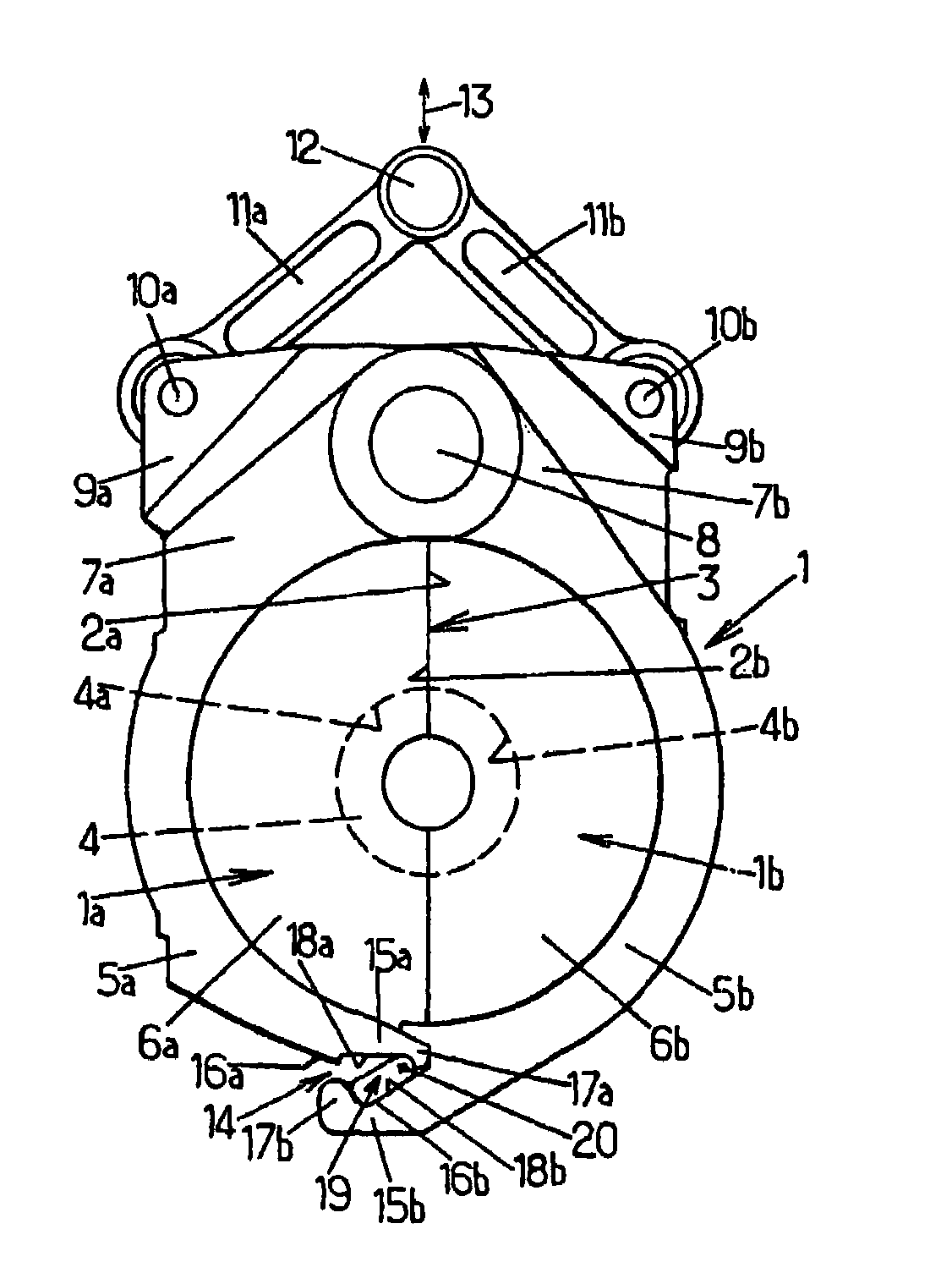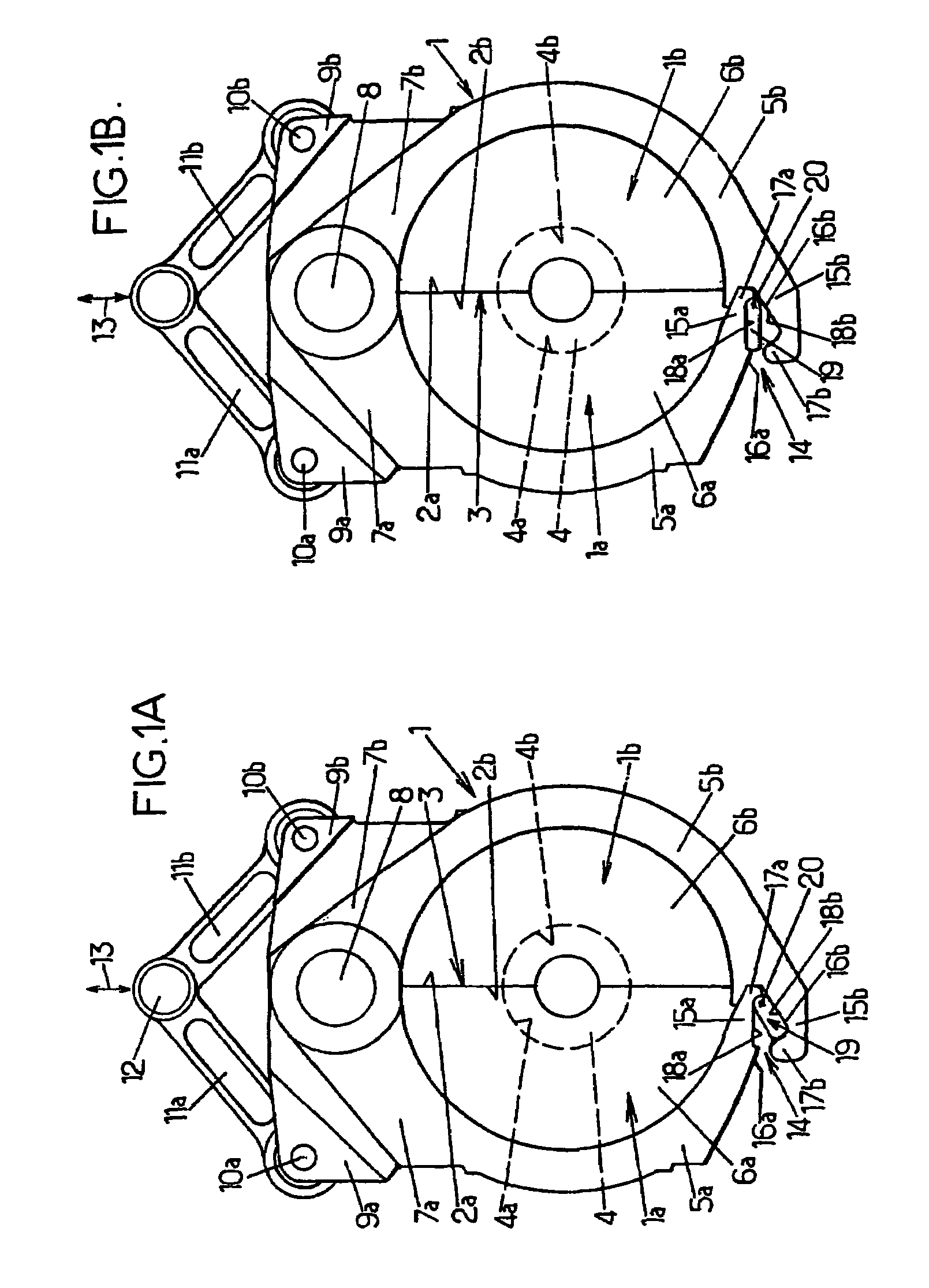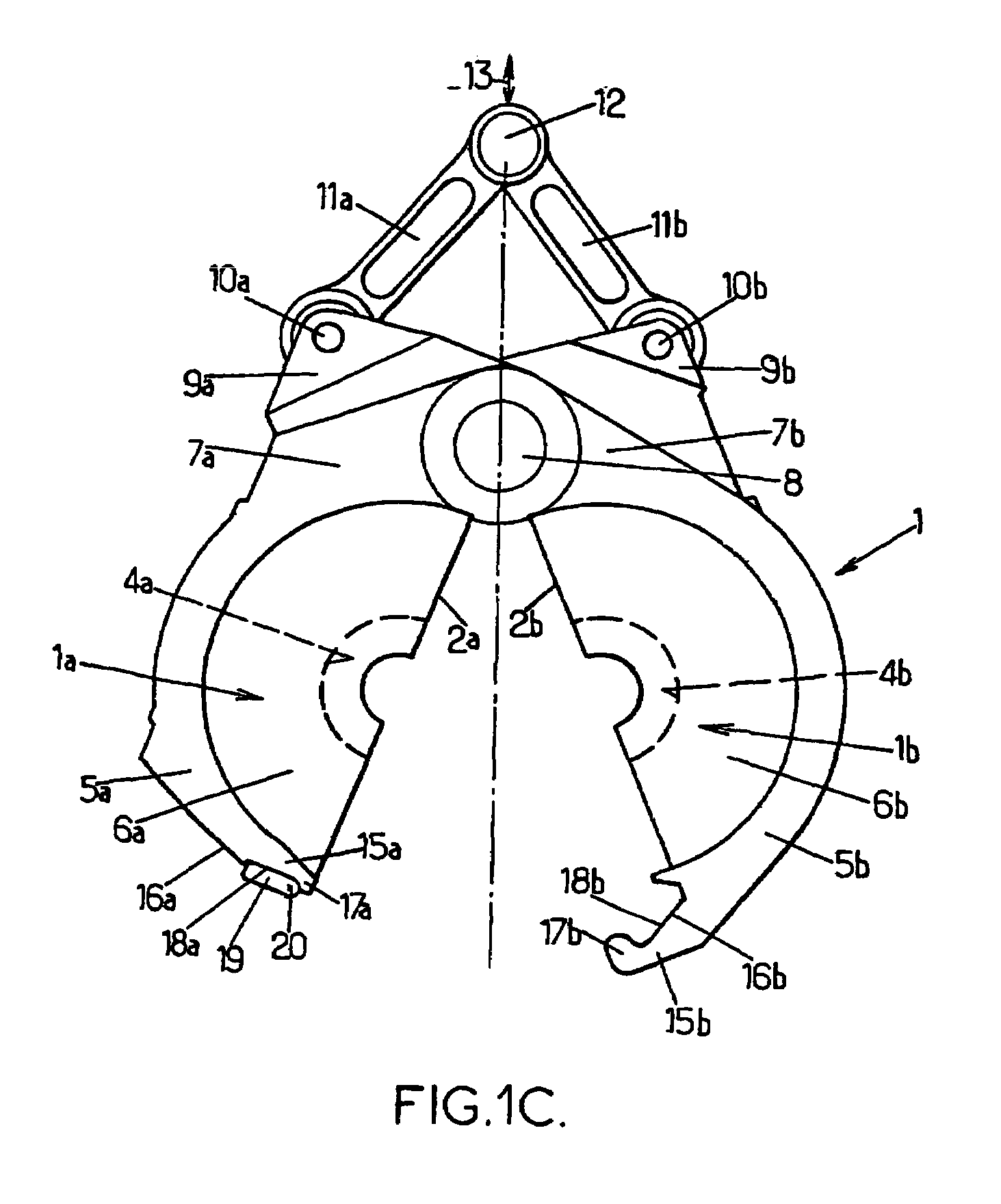Molding device for producing thermoplastic containers
a thermoplastic container and molding device technology, applied in the field of molding devices, can solve the problems of increasing the weight of half-molds and also their cost, requiring each finger to be in solid form, and therefore heavy and costly, and achieves the effects of low angular amplitude, fast production throughput, and relatively rapid completion
- Summary
- Abstract
- Description
- Claims
- Application Information
AI Technical Summary
Benefits of technology
Problems solved by technology
Method used
Image
Examples
Embodiment Construction
[0031]The arrangements according to the invention are improvements made to the molding devices for producing containers, such as bottles, by blow molding or stretch blow molding, from preforms made of a heated thermoplastic (for example PET). Such a molding device comprises at least one mold consisting of at least two half-molds (possibly a third part forms an axially displaceable mold base) which are mutually displaceable between an open position in which they are separated from one another and a closed position in which they are tightly pressed against one another by respective mating faces defining a joint plane, locking means being provided to lock the two half-molds in the closed position and to prevent their separation or partial opening when the blow molding fluid is introduced under very high pressure (for example typically in the order of 40×105 Pa).
[0032]Currently, such molding devices may comprise a plurality of molds and may therefore be designed in the form of a rotatin...
PUM
| Property | Measurement | Unit |
|---|---|---|
| pressure | aaaaa | aaaaa |
| height | aaaaa | aaaaa |
| forces | aaaaa | aaaaa |
Abstract
Description
Claims
Application Information
 Login to View More
Login to View More - R&D
- Intellectual Property
- Life Sciences
- Materials
- Tech Scout
- Unparalleled Data Quality
- Higher Quality Content
- 60% Fewer Hallucinations
Browse by: Latest US Patents, China's latest patents, Technical Efficacy Thesaurus, Application Domain, Technology Topic, Popular Technical Reports.
© 2025 PatSnap. All rights reserved.Legal|Privacy policy|Modern Slavery Act Transparency Statement|Sitemap|About US| Contact US: help@patsnap.com



